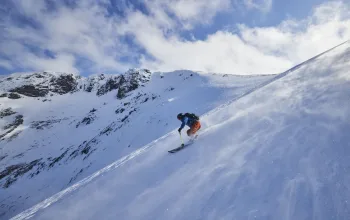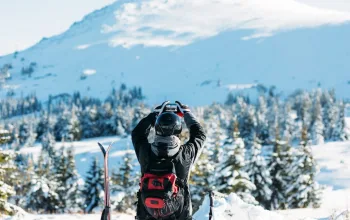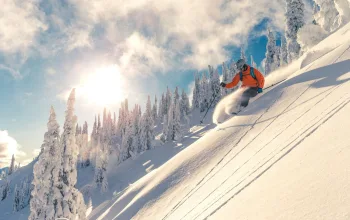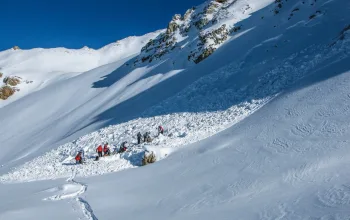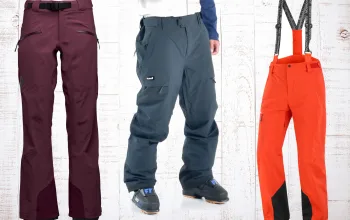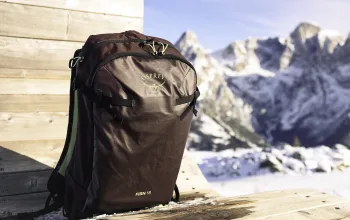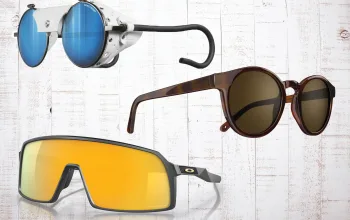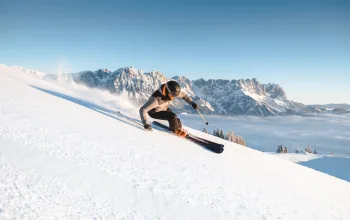Skiing technique is often presented as a mystifying mix of jargon, technical terms, and complex movement combinations that a contortionist would be proud of.
Even if the terms are mastered, many skiers then try and combine all these processes into a single movement, inevitably leading to overload, brain-fade and frustration.
But it doesn’t have to be this way. Break things down in fundamentals, and spend time practising each fundamental to build muscle memory, until the movements become natural and automatic and you’ll be flowing down the slopes with ease.
Weight for it…
Weight Distribution – Fore/Aft Balance
Focus on where your body weight (centre of mass) is over your feet, whether it’s mainly on your heels, across the whole foot, or on the balls of your feet. Have a few runs actively moving your weight fore and aft so you get used to sensing where this centre is through your feet.
You should be looking to have your weight centred or forward – if you feel it on your heels push against the front of your boot with your shins to bring your weight forward (leaning forward won’t automatically bring your centre of mass forward). If you feel like you are about to fall this simple act might save you!
Look to have your weight centred as you start the turn, which will allow the skis to pivot beneath you. As you complete the turn, press forward with your shins to bring your weight over the balls of your feet, this will help the skis to grip.
Separation anxiety
Upper and lower body independence
You should consider your upper body (above the waist) to work independently from your legs. Generally your upper body should face slightly down the mountain, which will keep the majority of your weight over the downhill ski and help it grip.
Be careful not to start a turn with your upper body especially your shoulders. Think about making the turn by pivoting your skis and keep your upper body facing slightly downhill. The steeper and icier it is, the more this will help you balance and grip
Go with the flow
Use a range of movement
To ski effectively you need to use a range of movements to help you stay in balance and to turn the skis. Apply pressure against the skis at the start of the turn by slowly stretching against your outside ski, your legs will straighten and your skis will change edges.
At this point you will then be able to gradually turn your feet in the direction that you want to go. Keep the turn shape nice and open and avoid the temptation to force the turn by twisting your shoulders or hips as this will knock you out of balance.
It is important to control your speed and you should allow your skis to scrape across the snow through the final stages of each turn. How much they scrape and skid is influenced by the angle of the skis’ edges against the snow and you shouldn’t try to increase this too much. At this point in the turn you may also feel as if you are losing balance so allow your legs to gently flex and bend until you are ready to start your next turn.
Remember that good skiing is relaxed and flowing and that as we encounter steeper slopes and ski at greater speeds we will need to increase and decrease certain movements in order to get the results that we want. A good skier is always looking ahead and adjusting their balance ready to make their next move.
Taking turns
Adjusting turn shape and linking turns
You should always be looking to link turns together, so your tracks look like ‘S’s not ‘Z’s. The reason for this is that it is much easier to start a turn as you finish the previous one than if you are static. Also if you turn and then run straight you will pick up too much speed and will be more likely to lose control. You always have maximum control when turning, so aim to be turning most of the time!

Core values
Keeping your core stable
As well as separating your upper and lower body position you should also focus on movement happening in your lower body with your upper body remaining still. The more the upper body and your centre of mass move around, the more likely they are to upset your balance and cause problems. A simple way to counter this is tense your stomach muscles, to keep your core stable and reduce upper body movement.
Pole position
Planting your poles
Poles have two main functions, to provide a rhythm and to help with balance and movement. By pole planting you are committing to a turn, which helps make the turns linked and also prevents your arms moving around too much. You should hold your poles in front of you and wider than hip width apart. A good rule is to check you can always see your hands. If you can’t they are probably too high, too low, or behind you! Pole planting also helps your range of movement. As you plant, allow your legs to stretch, your edges to change and pivot the skis to turn.
One at a time…
Try to focus on ONE of each of these above points for a short time. In the confined space of a Skiplex centre you can spend time focusing on each one with feedback from an instructor and with the aid of a mirror to help you see what is happening. Spending this time will build your muscle memory, and when you hit the snow you’ll be able to make elegant linked turns almost without thinking!
Training at a ski centre before your holiday is a brilliant way to improve your technique. However you may feel that you need a few lessons on the slopes when you get out to your holiday destination to boost your confidence. This is when it’s a great idea to book a few lessons with a reliable ski school like Sweet Snowsports who run ski lessons across the 3 Valleys.
Skiplex have centres in Reading, Basingstoke and Chiswick. Sessions start from £28.00 for children and £35.00 for adults, multi-buy discounts, courses and special offers run through the season.
For more information skiplex.co.uk




